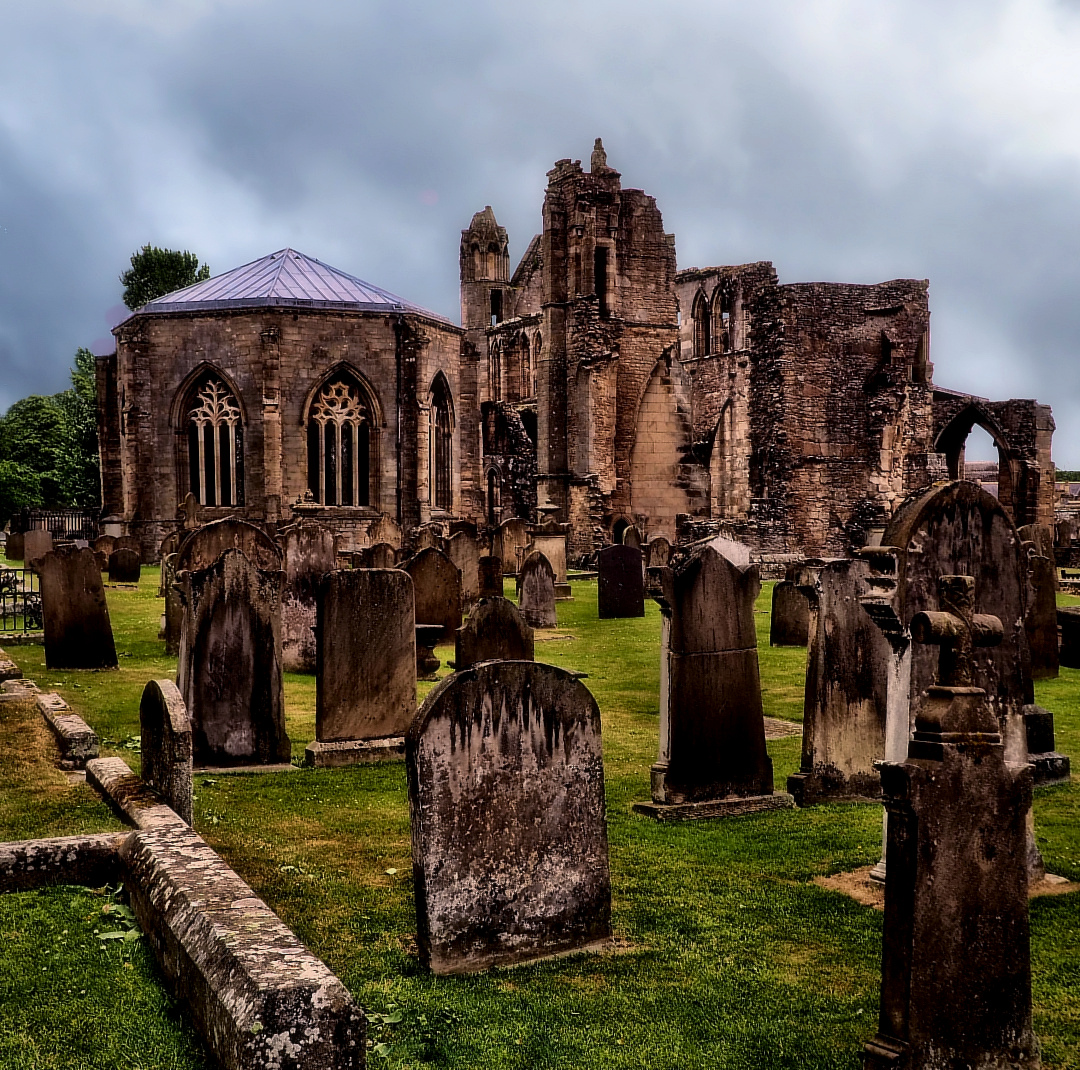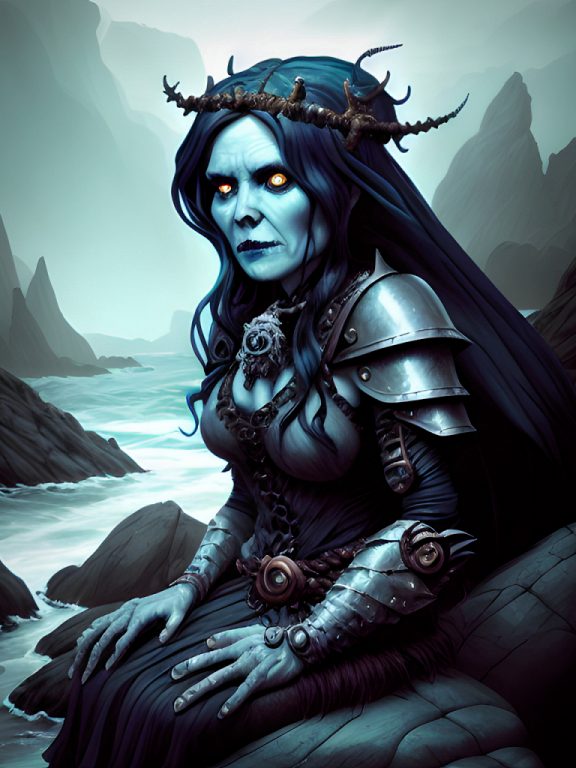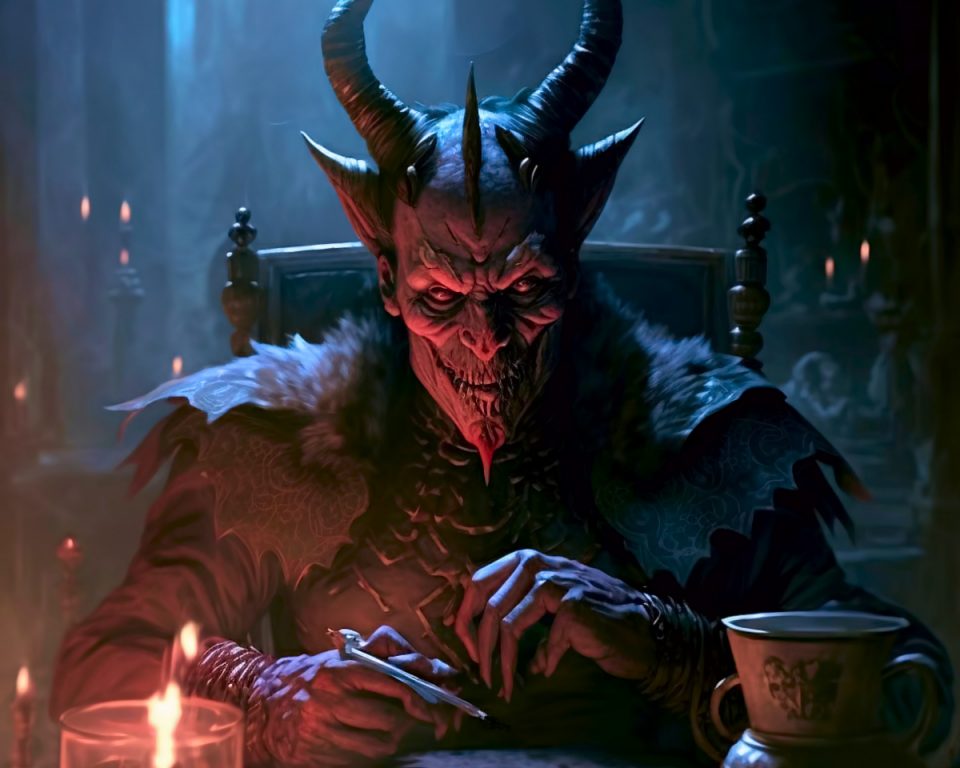No doubt a muffled sound rippled through the crowd before the onlookers fell silent. The witch-pricker stepped forward, ready to ply his trade on the accused. Transfixed, the crowd stared in ghoulish horror as the man began to shave his next victim. Perhaps the whole affair discomforted some of the gathered rabble. It was often the case that those who attended these public proceedings did so under duress. After all, public inquiries, trials and executions were public for a reason: the fate of the accused would serve as an example and act as a deterrent for those who might be tempted to break the law. This was post- reformation Scotland and the country was in the grip of a witch-hunt hysteria. Between 1661 and 1662, the number of witch trials and executions reached record levels.
So it was, that a woman stood in the audience in Newburgh, Fife watching one such shocking spectacle and began to formulate a plan. Witch-pricking was easy pickings. It paid well. It was not a highly skilled profession and there had been at least seven cases involving plaintiffs accused of witchcraft in Newburgh, so she had ample opportunity to watch a witch-pricker at work. There was only one problem: witch-pricking was man’s work. However, people can re-invent themselves. She would no longer be Christian Caddell. She would move away from the area, dress as a man and call herself ‘John Dickson.’
What did a Witch-pricker do?
During the 17th Century, a hysteria swept across Europe, heralding an inquisition which saw massive witch hunts, including trials, tortures and executions. Those found guilty would be strangled and their bodies burnt so that the devil could not re-incarnate them and use their bodies for his pernicious purposes.
Hundreds of people, mostly women, were suspected of performing the dark arts and they came from all walks of life. Even the nobility, such as Lady Glamis, were not above suspicion. There were a variety of methods which could be used to detect if a person was a witch:
- Being thrown into water to see if the person floated or sank.
- Recitation of prayers, such as was used in the case of Janet Horne.
- “Pricking” of moles or spots on the alleged witch’s skin.
A cottage industry of witch-prickers evolved from the use of this last test. They became a common presence in the churchyards and tolbooths, the length and breadth of the country, where they performed the high-earning job of plunging long pins into the people they were asked to examine. Dressed in the tall hats and dark cloaks of a Puritan, their very appearance was sinister. Nobody scrutinised a witch-pricker too closely for fear of drawing their attention and being on the receiving end of their trade.
Finding the Devil’s Mark
Witch-prickers were paid to find the ‘devil’s mark’ on accused witches. It was believed that when a witch entered into a pact with the devil, a mark was left on the skin to show an allegiance to their dark master. This mark could be large or small and could be found anywhere on the body. Often the mark was hidden in areas such as the armpits, under the eyelids or in private parts and cavities. The devil’s mark was distinguished from a benign mole or freckle by pricking. If a pin could be slipped into a blemish without bleeding or causing pain, it was taken as evidence that the accused was a witch.
Witch-prickers meticulously carried out their job. They began first, by stripping the accused naked and then shaved them from top to toe. Then the pin was pushed in repeatedly until the right spot was found. This was not some thin sewing needle but a hand-made pin, several inches long. In some cases, the repeated prodding numbed the area. In other cases, the victims momentarily passed out and seemingly no longer reacted to pain. We all have areas in our bodies which are surprisingly insensitive. However, there was a psychology to the witch-prickers’ methodology. This was a society which prized modesty. The accused women were stripped naked in public and handled all over their bodies. This was humiliating sexual abuse. Many would confess to simply make the ordeal stop.
The nature of the job encouraged the witch-prickers to become charlatans. As itinerant workers, they were paid for every witch they could positively identify. Many witch-prickers turned to using retractable pricking devices, where the pin could be withdrawn into the handle, making it appear as though the needle was piercing the skin, when it was not. The lack of bleeding or pain would result in a conviction and payment to the witch-pricker.
Christian Caddell as a Witch-pricker
It seems that Christian learned her trade from Scotland’s most notorious witch pricker: John Kincaid. Had Kincaid been called into Newburgh to search the accused for the Devil’s Mark? Many witch trials began when a suspected witch was brought before the Church Session, a kind of Church court consisting of the Minister and his Elders. The Minister in Newburgh, Lawrence Oliphant, certainly had a thing about witches. He accused his child’s wet nurse, Kathrin Key, of being a witch when the baby died. Later two women were sentenced to death in Coupar in Fife for being witches and setting his house on fire. Of course, it was outwith the Church Session’s jurisdiction to issue a death sentence and so they gathered up evidence, including using witch prickers and then sent it to the Privy Council who would organise a commission to investigate each witchcraft case in turn.
Perhaps Christian acted as Kincaid’s assistant. He was certainly a busy man in 1661. Kincaid was the witch pricker in multiple witchcraft investigations. He was even awarded the freedom of Forfar for his services as a witch pricker. It has been suggested that he was fueling the witch hunt at the time. He came to the attention of the Privy Council in early 1662, when it was felt that he was using dubious methods to convict witches. At the time a warrant was served for his arrest, Christian was busy changing her name and her sex.
Christian Caddell, now “John Dickson, a burgess from Forfar” turned up in Elgin in March 1662. John Innes, the Baillie of Spynie signed her up. Her contract was six shillings per day for maintenance and £6 Scots per witch with the mark. At that time, the ordinary wage for a man was one shilling per day. Christian was contracted for one year. She conducted her business far and wide and made it as far north as Tain in the Highlands.
Christian Caddell and Isobel Gowdie
Christian Caddell arrived in Elgin in March 1662. In nearby Auldearn, Isobel Gowdie’s confession was recorded in April 1662. Isobel Gowdie is probably Scotland’s most famous witch and it was her confessions that introduced the word ‘coven’ into our vocabulary today. Isobel was accused of cruelly killing the babies of her landlord, Hay the Laird of Parks and Lochloy, by allegedly casting spells to induce fevers. The notary public who recorded Isobel Gowgie’s confession was none other than John Innes. Could this be the same John Innes who hired Christain Caddell? Is it possible that Christian played a role in Isobel Gowdie’s confession? Was this one of her first victims?
A Change in Christian Caddell’s Fortunes
In May 1662, Christian’s work took her to Tain in the Highlands. Here she was asked to examine a man called John Hay. Hay had peaked an acquaintance, who vindictively responded by implicating him as a witch. But Hay was different from her earlier victims. He was a court messenger with a job which prestigiously bore the royal coat of arms. He had a little legal knowledge too. Citing irregularities, he successfully petitioned the government for her arrest. The sheriffs and their deputes in Inverness and Dornoch were ordered to seek her arrest. However, Christian had re-invented herself once and would do so again.
Christian Caddell and the McLean Witches of Strathglass
Christian Caddell moved south. In June 1662, a commission was issued for the Strathglass witches. For more than two hundred years, a colony of MacLeans had lived as law-abiding tenants on Chisholm of Cromer’s lands in Strathglass, to the southwest of Beauly. Chisholm had other plans for his lands and in the current climate of witch paranoia, opportunistically brought forth an accusation of witchcraft as an easy way of removing undesirables. At Chisholm’s instigation, a number of the Macleans were put under questioning by the ministers and Elders of the Kilmorack and Kiltarlity. They were taken forcibly to James Fraser’s church in Wardlaw. Christian Caddell was never one to avoid controversy. Here, she plunged into the interrogation, this time under the name of Mr James Paterson or Paterson the Pricker. In Wardlaw churchyard, Christian shaved off her victims’ hair, bundled it together and hid it in a stone dyke. Then she began to prick her victims.
The Reverent Fraser described the scene:
There came then to Inverness one Mr Paterson who had run over the kingdom for trial of witches, and was ordinarily called the Pricker, because his way of trial was with a long brass pin. Stripping them naked, he alleged that the spell spot was seen and discovered. After rubbing over the whole body with his palms, he slipt in the pin, and, it seems, with shame and feare being dasht, they felt it not, but he left it in the flesh, deep to the head, and desired them to find and take it out…
Apparently the fourteen women and one man accused of witchcraft, were subjected to brutal torture, as one witness recounts that the victims were:
barbrouslie tortured . . . by waking, hanging them up by the thombes, burning the soles of their feet at the fyre, drawing of others at horse taills and binding of them with widdies about the neck and feet and carrying them so alongst on horseback to prison, wherby and by other tortur one of them hath become distracted, another by their cruelty is departed this lyfe, and all of them have confest whatever they were pleasit to demand of them.
Christian Caddell gets Arrested
These trials at a local level were preliminary fact-finding missions. Enough evidence had to be uncovered to submit a case to the Privy Council in Edinburgh. The Privy Council accepted Chisholm’s application for a full-scale trial and named him, his brother and two of his cousins as Commissioners to conduct the trial. A series of instructions were handed out to the Chisholms on how to proceed with the trial.
One of the accused distraught husband turned to Sir Rory MacLean of Duart, the MacLean Clan Chief. Duart petitioned the Privy Council and stated that since Chisholm could not expel his MacLean tenants by legal means, he had resorted to an accusation of witchcraft. The commission was promptly disbanded and in October 1662, John Neilson, a notary public, was sent to examine the women for signs of torture. None were found but in the intervening months, their hair would have grown, and scars would have healed over. At no point did he ask the women if they had been tortured. Meanwhile, Chisholm stood waiting at the door of the prison vault. His presence is unlikely to have exerted a neutral influence on the events. Ultimately the accused were set free and Christian was arrested.
Christian Caddell meets her Fate
Christian Caddell was sent to the Tolbooth in Edinburgh, where her sex was at last uncovered. She then confessed that she was not discovering witches through pricking but by looking into her victims’ eyes. Christian, it seems, was fake in more ways than one.
Christian was more fortunate than her victims. She was sentenced to transportation as an indentured-servant to the fever-ridden plantations of Barbados. The merchant who bought over her bond was a Quaker Englishman, Morris Trent, who lived in Leith. He organised that she and another thirteen convicts should be shipped to the colonies aboard the Mary of Leith, captained by David Causton. Christian then disappears from the history books. Many prisoners did not survive the arduous journey to the colonies and for those who finally reached the plantations, life was usually hard and short. Then again, Christian Caddell was a survivor.
During her brief spell as a witch-pricker, Christian Caddell had accumulated enough wealth to hire two servants, including one Issobel Dick. She had also been responsible for the deaths of two people in Elgin, two in Forres and Isobel or Margaret Duff in Inverness. In total, at least six innocent people met their fate at her hands, although it is suspected that she was involved in ten positive convictions.
There is one last cruel and bitter irony. As she was being transported on 4 May 1663, the last of her victims, Isobel Elder and Isobel Simpson, were being executed in Forres. Today at the foot of Cluny Hill, in front of the Police Station, lies the ‘Witches Stone’. Perhaps this was where one of these poor women met their fate.




